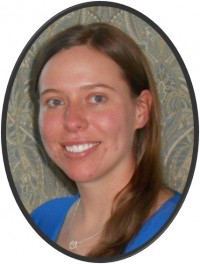Direct Laser Acceleration in Laser Wakefield Accelerators

Speaker: Jessica Shaw
Affiliation: Ph.D. Candidate - UCLA
Abstract: In this dissertation, the direct laser acceleration (DLA) of ionization-injected electrons in a laser wakefield accelerator (LWFA) operating in the quasi-blowout regime has been investigated through experiment and simulation. In the blowout regime of LWFA, the radiation pressure of an intense laser pulse can push a majority of the plasma electrons out and around the main body of the pulse. The expelled plasma electrons feel the electrostatic field of the relatively-stationary ions and are thus attracted back towards the laser axis behind the laser pulse where they overshoot the axis and set up a wake oscillation. When ionization injection is used, the inner-shell electrons of higher-Z dopant atoms are tunnel ionized near the peak of the laser pulse. Those electrons slip back relative to the wake until they gain enough energy from the longitudinal wakefield to become trapped. Those electrons that are trapped off-axis will undergo betatron oscillations in response to the linear transverse focusing force of the ions. Through experiments and supporting simulations, this dissertation demonstrates that when there is a significant overlap between the drive laser and the trapped electrons in a LWFA cavity, the accelerating electrons can gain energy from the DLA mechanism in addition to LWFA. When laser pulse overlaps the trapped electrons, the betatron oscillations of the electrons in the plane of the laser polarization can lead to an energy transfer from the transverse electric field of the laser to the transverse momentum of the electrons. This enhanced transverse momentum can then be converted into increased longitudinal momentum via the v x B force of the laser. This process is known as DLA. In this experimental work, the properties of the electron beams produced in a LWFA where the electrons are injected by ionization injection and become trapped without escaping the laser field have been investigated. The maximum measured energy of the produced electron beams scales with the overlap between the electrons and the laser. Undispersed electrons beams are observed to be elliptical in the plane of the laser polarization, and the energy spectrum splits into a fork at higher energies when the electrons beams are dispersed orthogonal to the direction of the laser polarization. These characteristic features are reproduced in particle-in-cell (PIC) code simulations where particle tracking was used to demonstrate that such spectral features are signatures of the presence of DLA in LWFA.
Biography: Jessica Shaw graduated from Villanova University in 2010 with a Bachelor of Science degree in Civil & Environmental Engineering and a Bachelor of Arts in Physics. She joined Professor Chan Joshi’s Laser Plasma group in 2010 and received her Master of Science in Electrical Engineering in 2013. Through the course of her PhD, Jessica has performed experiments at both the UCLA Xtreme Plasma Laboratory and the Lawrence Livermore National Laboratory exploring electron and x-ray generation. Jessica’s dissertation work has been awarded as the Best Student Paper at the North American Particle Accelerator Conference. Jessica has been awarded several fellowships including the Cota-Robles Fellowship, National Defense Science and Engineering Graduation Fellowship, National Science Foundation Graduate Fellowship, and Dissertation Year Fellowship. In addition to her graduate work, Jessica served as a resident assistant at UCLA from 2010 to 2014. In her free time, she enjoys backpacking, rock climbing, and horseback riding.
For more information, contact Prof. Chandrashekhar Joshi (joshi@ee.ucla.edu)
Date/Time:
Date(s) - Jun 07, 2016
1:00 pm - 3:00 pm
Location:
E-IV Faraday Room #67-124
420 Westwood Plaza - 6th Flr., Los Angeles CA 90095
